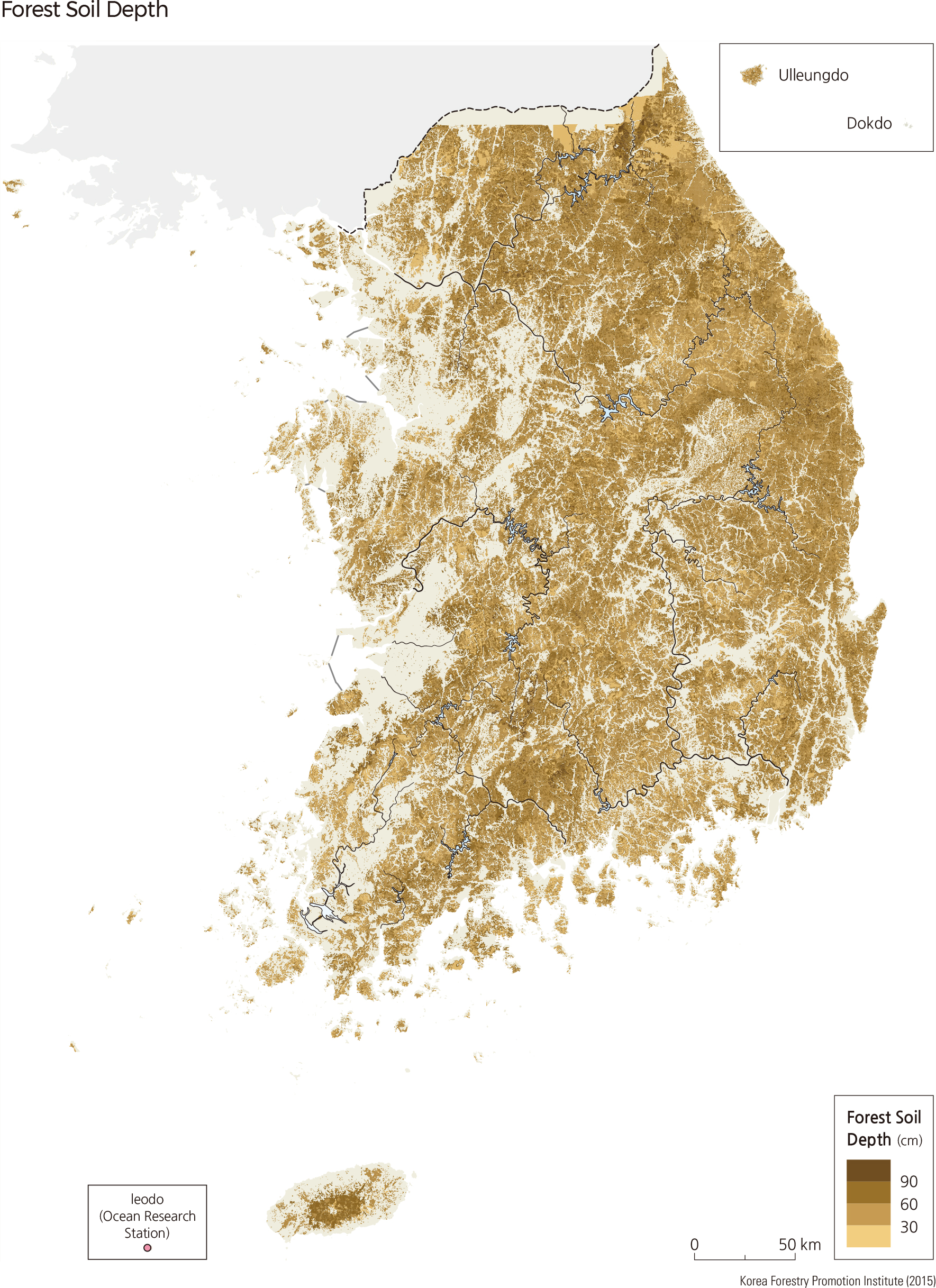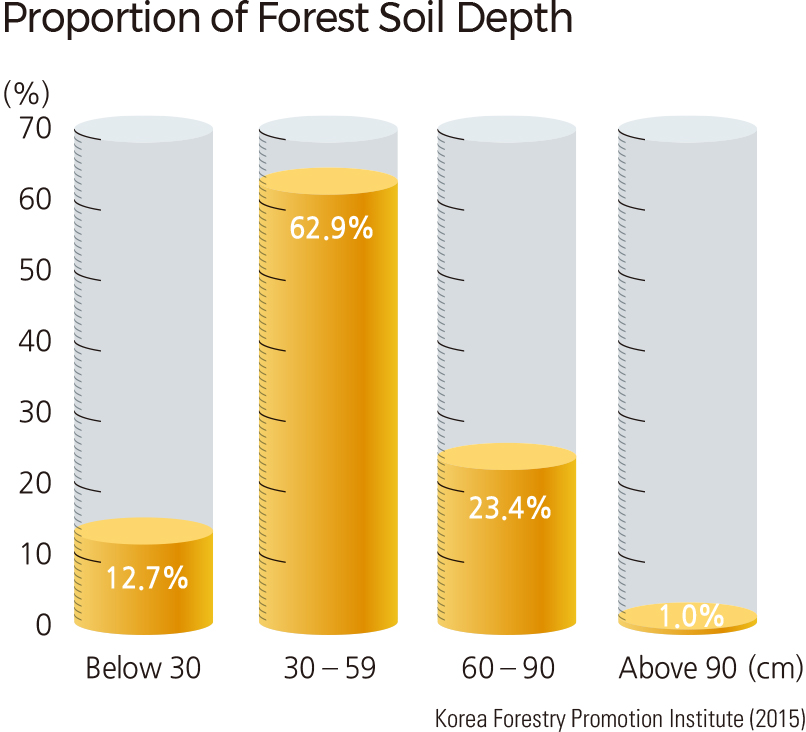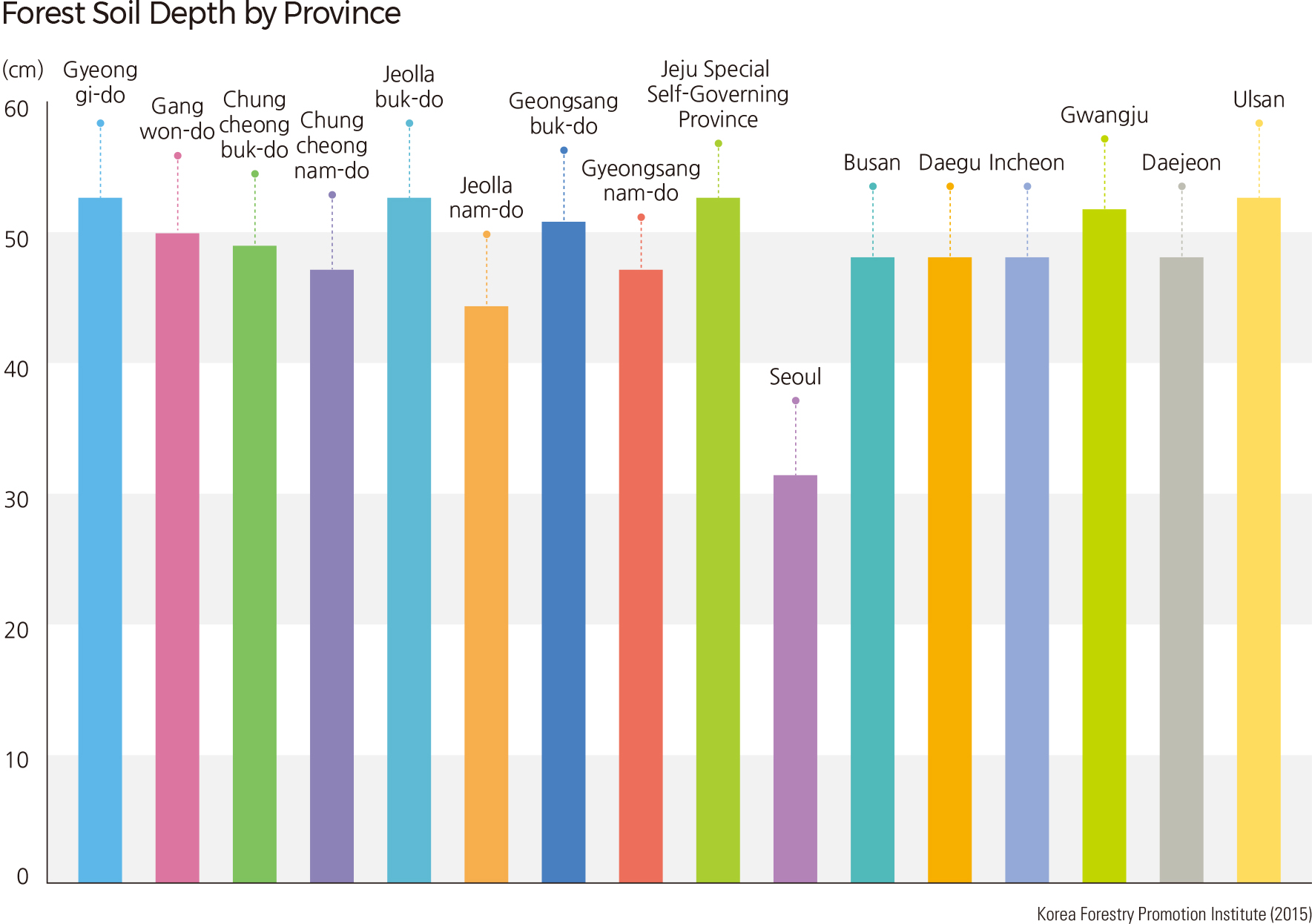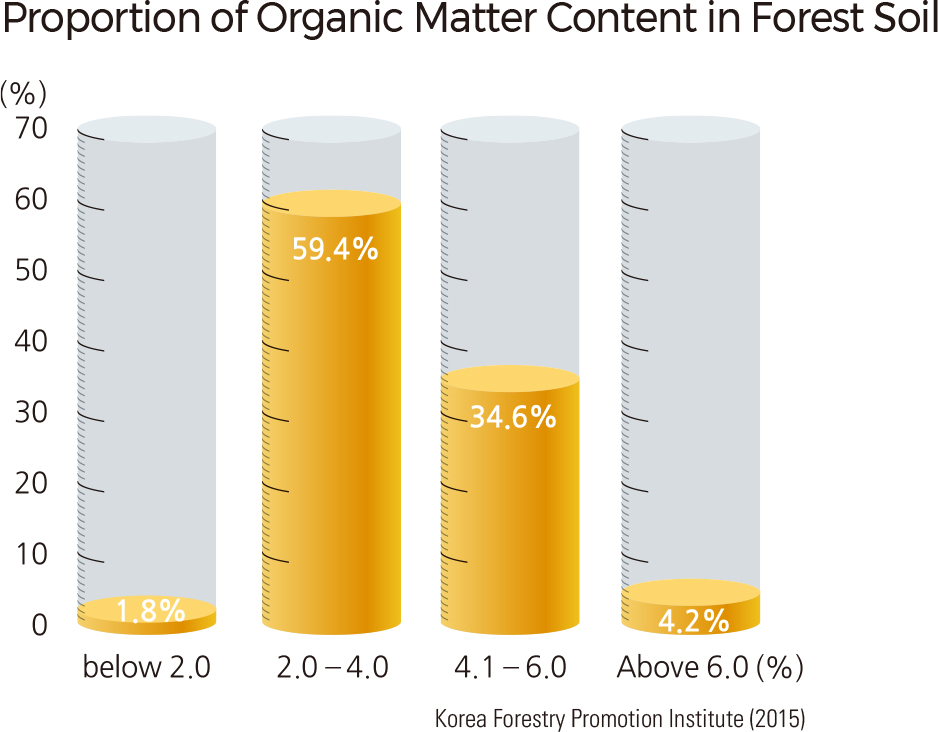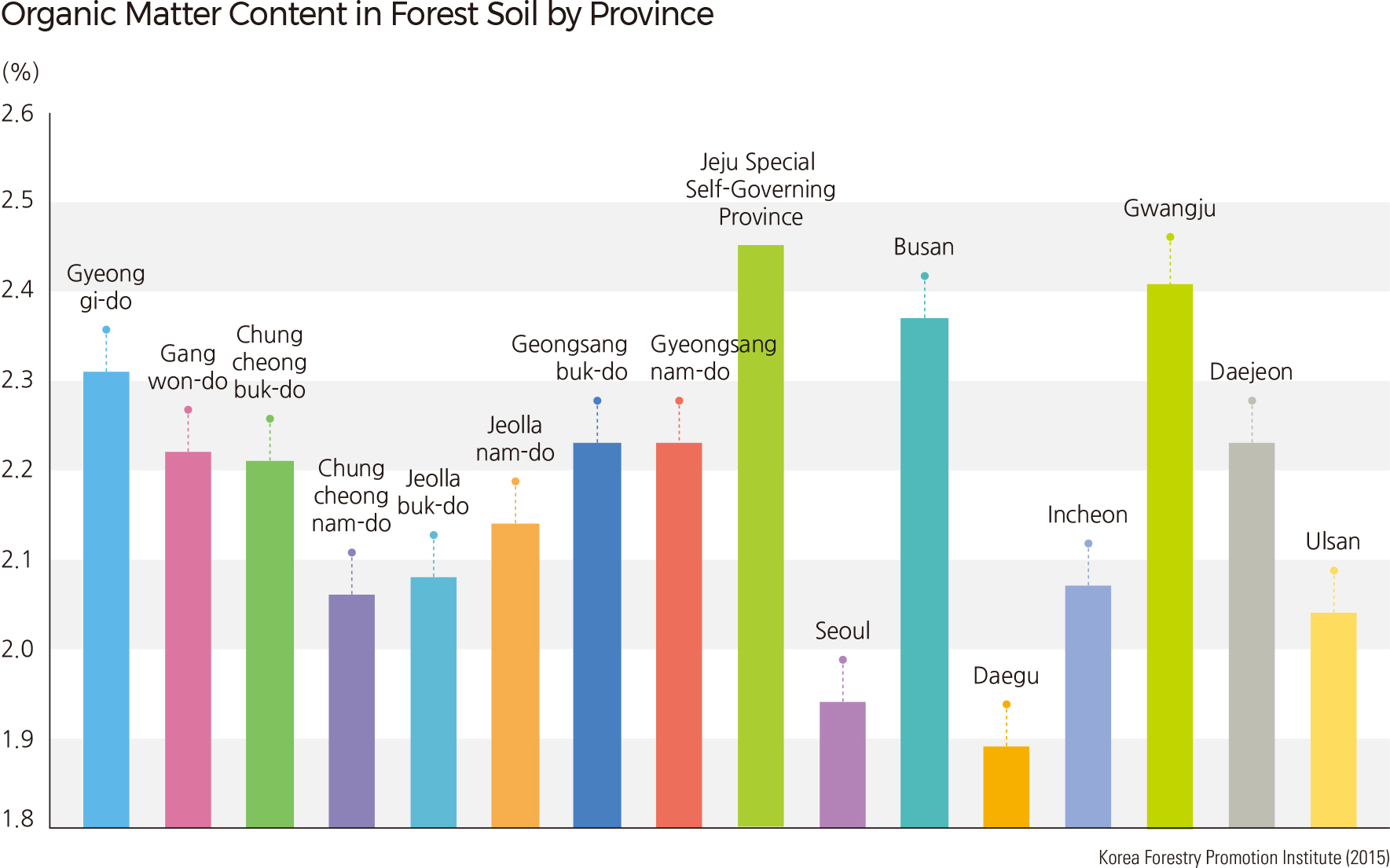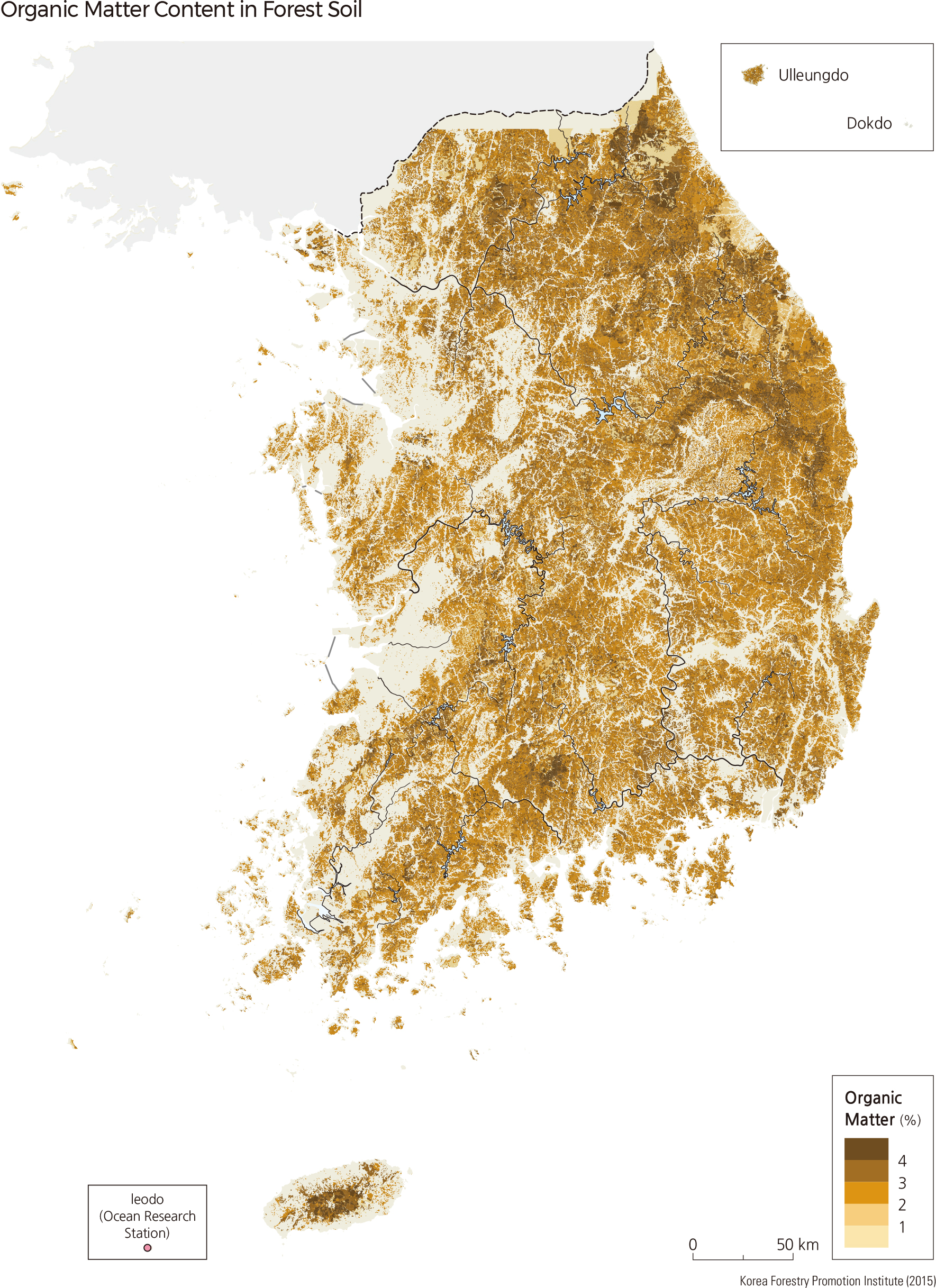English II 2020
The depth of forest soil is affected by various soil-forming factors, including climate, to-pography, organisms, parent material, and anthropogenic disturbance. In the case of forest soil in Korea, topographic and anthropogenic factors account for most forest soil depth characteristics. Along with the fact that 51% of Korea has mountain areas steeper than 20˚, the exploitation of forest resources during the Japanese Colonial Period and the Korean War caused severe topsoil loss. Throughout the 1970s and 1980s, a series of nationwide afforestation projects stabilized most of the devastated forest areas. However, soil development processes have yet to achieve full maturity.
The average soil depth of Korean forests is 51 cm, which is considered to be quite shallow. Furthermore, 76% of forest soils have a depth of less than 60 cm, indicating that productivity is low. Recently, forest soil management has become more important as social demands for sustainable forest resources (timber, raw material, other) continue to grow.
In general, organic matter in forest soil is approximately twice that is found in ordinary farm field soils. The leaves and branches that fall from trees decompose on the ground surface and enrich the soil as humus. The resulting mixture of organic material within the soil increases the capacity for water and nutrient storage and also alters the degree of potential yield.
Forests with an organic matter content of 2.0–4.0% account for 59% of the forest area, while soils with 4.1–6.0% organic matter account for 35% of the total forest. The average soil depth of the forests is 51 cm. The productivity of these forests is poor since 76% of the total forest has a depth of less than 60 cm. Nevertheless, forest soil management has become important with increasing social demands for timber and short-term income forest products. If classified by tree species, organic matter content is 3.6% in coniferous forests dominated by pines and 6.1% in broadleaf forests with mainly oak trees. This difference is due to the litter-fall decomposition rates between tree species, which determine the amount of organic matter in forest soil.
|
